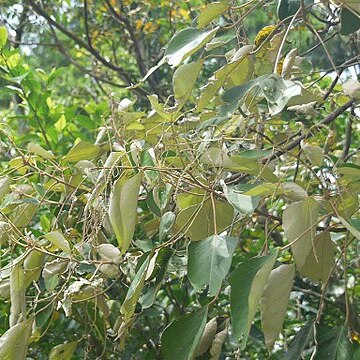Shrubs or trees, 3-15 m tall. Branchlets reddish stellate-tomentulose. Stipules small; petiole 2-15 cm; leaf blade rhombic, ovate, or triangular-ovate, often 1-3-lobed or 3-cuspidate, 5-15 × 3-12 cm, thickly papery, adaxially glabrescent, abaxially grayish tomentulose, base cuneate, sometimes slightly peltate, with 2 large basal glands, apex acuminate; basal veins 3-5. Male and female inflorescences often branched, 10-25 cm, tomentulose; bracts ovate, 1-2 mm. Male flowers 2-7-fascicled; pedicel 2-3 mm; calyx lobes 3 or 4, ovate, 2-2.5 mm, stellate-puberulent; stamens 50-60. Female flowers: sepals 4 or 5, oblong, 2-3 mm, tomentulose; ovary tomentulose; styles 3, ca. 3 mm, plumose. Fruiting pedicel ca. 2.5 mm; capsule 3-locular, ca. 10 mm in diam., tomentulose, sparsely softly spiny, spines subulate, 4-5 mm. Seeds subglobose, ca. 4 mm in diam., blackish, verruculose or smooth. Fl. Jul-Oct, fr. Oct-Dec.


